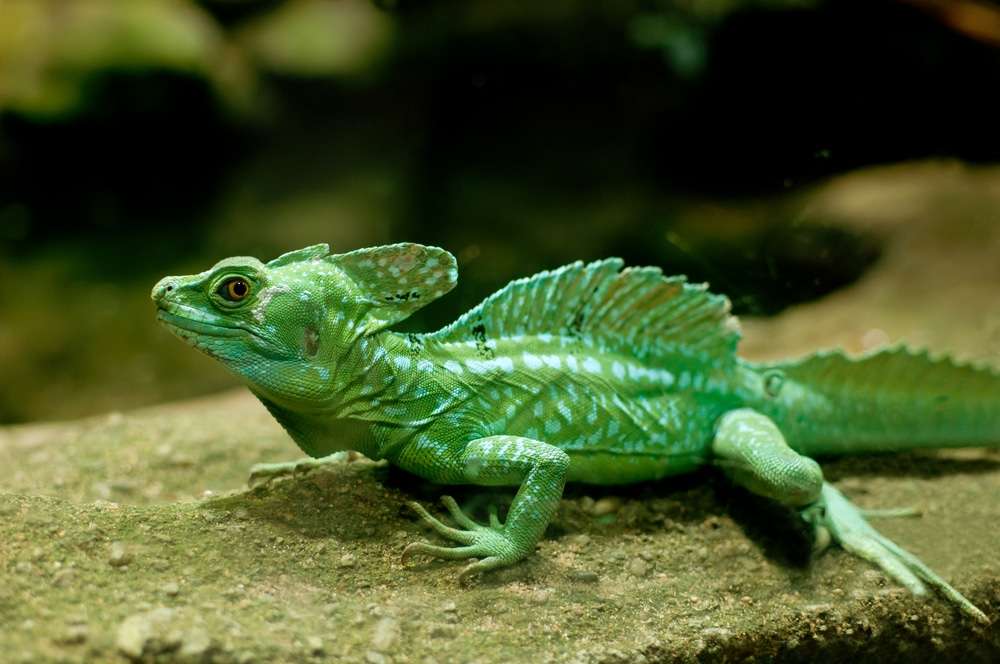
Description:
Scientific name: Basiliscus plumifrons
Life span: 5-10 years
They have round eyes with yellow irises and a triangular head with large ear holes. Its 25 in (66 cm) long, whip-like tail is either unmarked or has black bands running through it. Regarding their physical characteristics, particularly the distinctive crests on their head and body, they exhibit sexual dimorphism.
The four crests on the males’ bodies are located on their head, tail, and back, along with a smaller one behind their eyes. On the other hand, the female lizards only have one crest on their heads. Granular scales and large hind limbs that are longer than their forelimbs are shared by both sexes.
Native Region/Habitat
Central America is home to these lizards, including Honduras, Nicaragua, Costa Rica, and western Panama. They reside near water sources in marshes and tropical rainforests.

Behavior:
The male basilisks in the wild avoid other males because they are very possessive. It’s normal to see groups of many women and lone men.
They like trees as their primary food source, but they also prefer to be near water so they may dive into it if danger approaches. These lizards are adept runners and may pace at a speed of 7 mph on land when threatened or alarmed.
It will eventually become fatigued when running on water, decreasing its speed and having to swim the remaining distance. Like the majority of basilisks, they can withstand being submerged in water for as little as 10 minutes to as much as an hour.
Care As a pet/In captivity:
Enclosure:
The vivarium of a green basilisk should be six feet long, two feet broad, and four feet high. These lizards need space to spread out because they are huge. Green basilisk hatchlings can thrive in a 50-gallon breeder tank, but as they become bigger, they’ll need more space.
Temperature and Humidity:
Your green basilisk’s enclosure will need to be kept at various temperatures. A basking location should be at 95 degrees Fahrenheit during the day and 75 to 80 degrees during the night, with the ambient temperature falling between 90 and 95 degrees. Target the basking area with a heat source that covers at least a third of the enclosure. On one end of the enclosure, a basking bulb connected to a dimming thermostat will make a great basking area.
The vivarium’s internal humidity should range from 60% to 70% all year round. It is ideal to water the cage twice daily using an automatic misting system to maintain stable humidity levels.
Food and Water:
The green basilisks eat anything. In the wild, the lizards eat fruits, vegetables, and insects. Fresh veggies, insects, and other small invertebrates will promote healthy growth in your green basilisk. Feed your lizard at intervals of ten minutes crickets, termites, fly larvae, earthworms, silkworms, and other feeder insects. The diet can be balanced with the help of vegetables like kale, collard greens, and spring mix. Green basilisk hatchlings love to consume little insects because they are insectivorous. Pinhead crickets, fruit flies, and little crickets should all be given to your hatchling. To prevent bloating and indigestion, gradually introduce veggies to children and adults.
Green basilisk hatchlings should be fed three times daily, juveniles once daily, and adults three times weekly. Give your green basilisk access to pure, chlorine- and bleach-free water. Don’t give green basilisks food that is bigger than their heads. The lizards could suffocate and die from eating too much food.
Table





